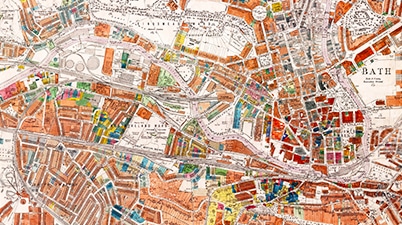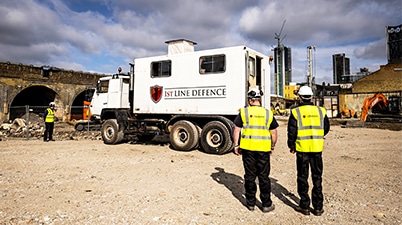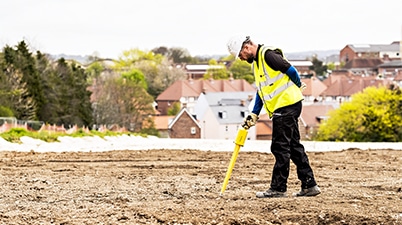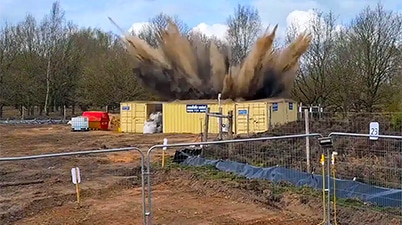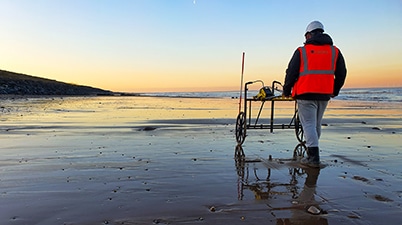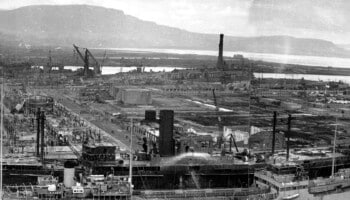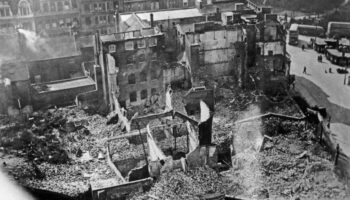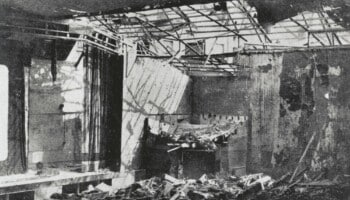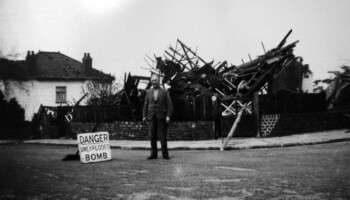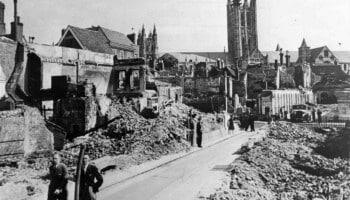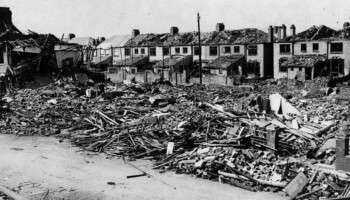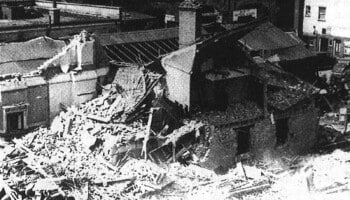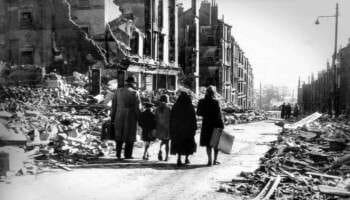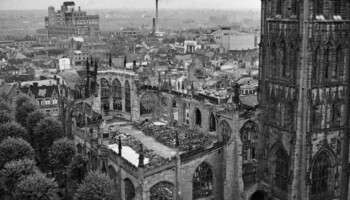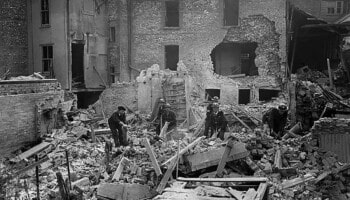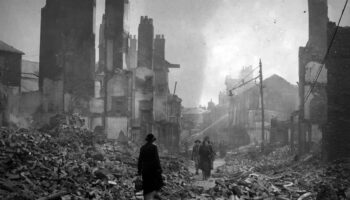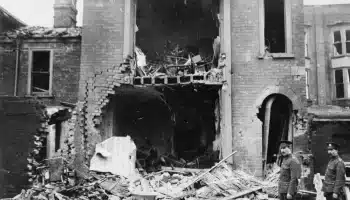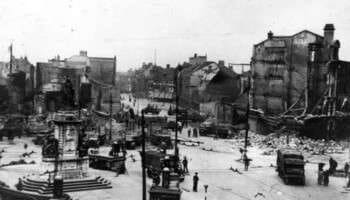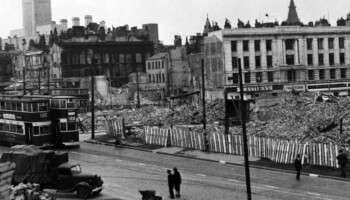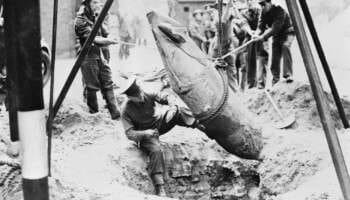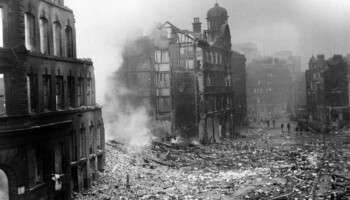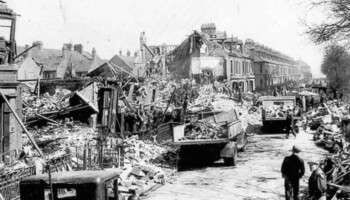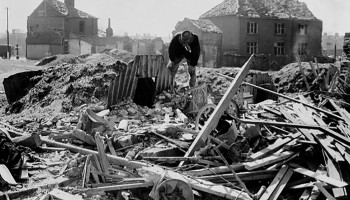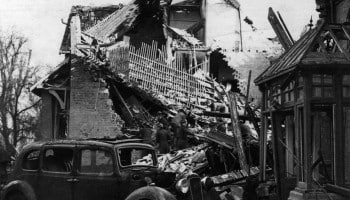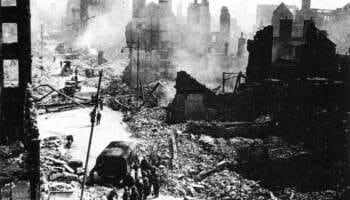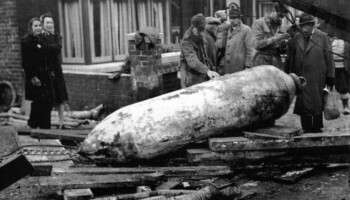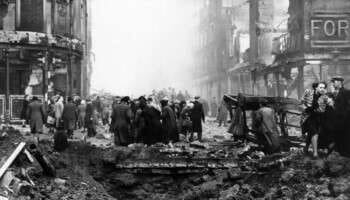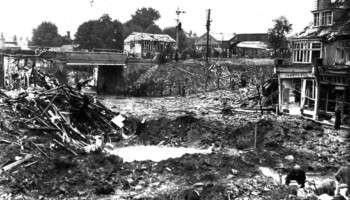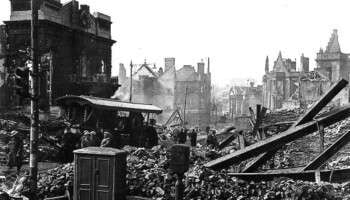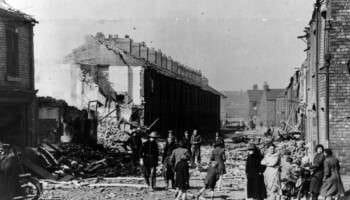Home » Resources » UXO City Guides »
UXO City Guide
Home Office Bombing Statistics for Bath
Record of German Ordnance dropped on the County Borough of Bath
High Explosive Bombs (All types)
410
Parachute Mines
0
Oil Bombs
1
Phosphorus Bombs
0
Fire Pots
0
Pilotless Aircraft (V-1)
0
Long-range Rocket Bombs (V-2)
0
Weapons Total
411
Area Acreage
5,152
Number of items per 1,000 acres
80
Why was Bath targeted and bombed in WWII?
Although the city of Bath contained hardly any targets of military or industrial significance during WWII, it still suffered devastating bombing at the hands of the Luftwaffe. This was largely due to the ‘Baedeker Raids’ of April and May 1942, which included a series of attacks ordered by Hitler on British ‘cultural’ targets.
These were in retaliation for the Royal Air Force (RAF) raid on the historic city of Lübeck in northern Germany. Distinguished by its famous Gothic and Medieval architecture, Lübeck was of considerable historic value. It was chosen by British Bomber Command as a target not for its manufacturing or engineering significance, but because it was straightforward to locate, would easily allow testing of new bombing tactics – and would damage German morale.
In reprisal, the German military planned the bombing of British cities of cultural significance – Exeter, Norwich, York, Canterbury – and famously – Bath. These were reportedly selected from the German Baedeker travel guide as cities of historic merit.
Home Office Bombing Statistics for Bath
Details obtained from the official Home Office bombing statistics, highlights the volume and type of bombs that fell on County Borough of Bath throughout WWII.
A total of 410 recorded bombs fell on Bath, equating to 80 items of ordnance per 1,000 acres.
However, this does not account for any bombs that fell unrecorded and unexploded during the April 1942 raid. These unidentifiable items, falling unnoticed are what pose a potential risk to construction today.
There were a number of specific targets within Bath which drew particular attention of the Luftwaffe. For example, the German military target/reconnaissance photograph above identifies a Gas Works west of the cite centre, and a military camp (MoD Foxhill) to its south-east.
The Bath Blitz: April 25-27, 1942
Bath was attacked over three consecutive nights on the weekend of 25th to the 27th April 1942. High explosive bombs dropped by over eighty bombers of Luftflotte III killed over 400 people. Many residents ignored the initial air-raid sirens, as they presumed the aircraft would be targeting Bristol, as had happened almost every night for the previous four months1. The raids totally destroyed 329 buildings, wrecked an additional 700 so severely that they had to be demolished, and inflicted some degree of damage to at least 1,900 properties2.
The first raid began just before 23:00 on the Saturday night and lasted until 01:00. The German aircraft then returned to bases in France, refuelled, rearmed and returned at 04:35. Bath was still on fire from the first raid, making it easier for the bombers to pick out their targets. The third raid commenced in the early hours of Monday morning. This only lasted two hours but reportedly caused extensive damage. The bombers flew low to drop their high explosives and incendiaries, Bath had no significant air defences during any of the raids. Some of the attackers machine-gunned the streets to hamper the emergency services3.
Destruction and Damage in Bath
The resulting damage and disruption was on a huge scale. The photograph above shows New King Street, which was a busy route into the city centre from the west in 1942.
This type of damage was typical, with bomb craters and collapsed buildings all across Bath’s historic streets. Rubble from one part of a street would be used to fill bomb craters in another, to create a passable surface. Unexploded bombs had to be dealt with, so several areas remained evacuated after the raids.
The image below is a section of the Bath Bomb Damage Map showing the severity of damage that resulted from the bombing raids of April 1942. Few areas of the city were left untouched.
Aftermath: Rubble, Craters & Displacement
The North-eastern and central parts of the city were the worst affected areas. Many historic and residential neighbourhoods were badly damaged. In the city centre, Queen Square, The Assembly Rooms, The Circus and Gay Street were all damaged. The Walcot Street and London Road areas to the east of the centre received a high concentration of strikes – largely affecting working class housing. Incendiary bombing was bad around Green Park and Lower Weston – many commercial properties in particular were destroyed.
Can UXO still pose a risk to construction projects in Bath?
The primary potential risk from UXO in Bath is from items of German air-delivered ordnance which failed to function as designed. Approximately 10% of munitions deployed during across the UK during WWII failed to detonate, and whilst efforts were made during, and after the war to locate and make UXBs safe, not all items were discovered. This is evidenced by the regular, on-going discoveries of UXO during construction-related intrusive ground works across the UK – not just in Bath.
This lack of comprehensive understanding of the full extent of bombing in Bath makes the area especially challenging when considering the potential for UXO to remain undiscovered.
I am about to start a project in Bath, what should I do?
Developers and ground workers should consider this potential before intrusive works are planned, through either a Preliminary UXO Risk Assessment or Detailed UXO Risk Assessment. This is the first stage in our UXO risk mitigation strategy and should be undertaken as early in a project lifecycle as possible in accordance with CIRIA C681 guidelines.
It is important that where a viable risk is identified, it is effectively and appropriately mitigated to reduce the risk to as low as reasonably practicable (ALARP). However, it is equally important that UXO risk mitigation measures are not implemented when they are not needed.
While there is certainly potential to encounter UXO during construction projects in Bath, it does not mean that UXO will pose a risk to all projects. Just because a site is located in Bath does not mean there is automatically a ‘high’ risk of encountering UXO. It really does depend on the specific location of the site being developed.
A well-researched UXO Risk Assessment will take into account location specific factors – was the actual site footprint affected by bombing, what damage was sustained, what was the site used for, how much would it have been accessed, what were the ground conditions present etc.
It should also consider what has happened post-war – how much development has occurred, to what depths have excavations taken place and so on. This will allow an assessment of the likelihood that UXO could have fallen on site, gone unnoticed and potentially still remain in situ.
Recent UXO discoveries in Bath
Since the war, many items of UXO have been discovered across multiple cities within the UK, with Bath no exception. See the news articles below about UXO incidents and discoveries from national and local press in Bath.
1st Line Defence keep up-to-date with relevant and noteworthy UXO-related news stories reported across the UK, and you can browse through these articles using the buttons below.
Press articles 2025 Press articles 2024
Get UXO risk mitigation services from a partner you can trust
UXO City Guides
Got a project in Bath? Need advice but not sure where to start?
If you need general advice about UXO risk mitigation in Bath, get in touch.
Contact Us
* indicates required fields
